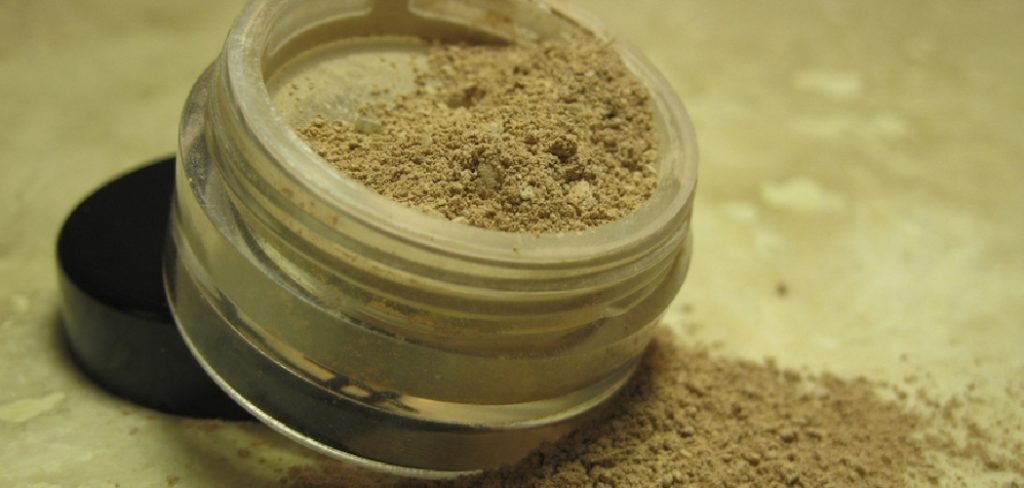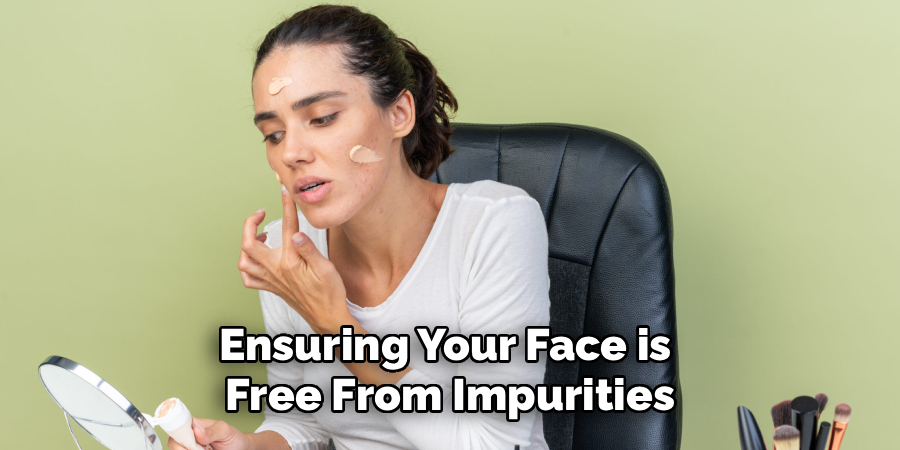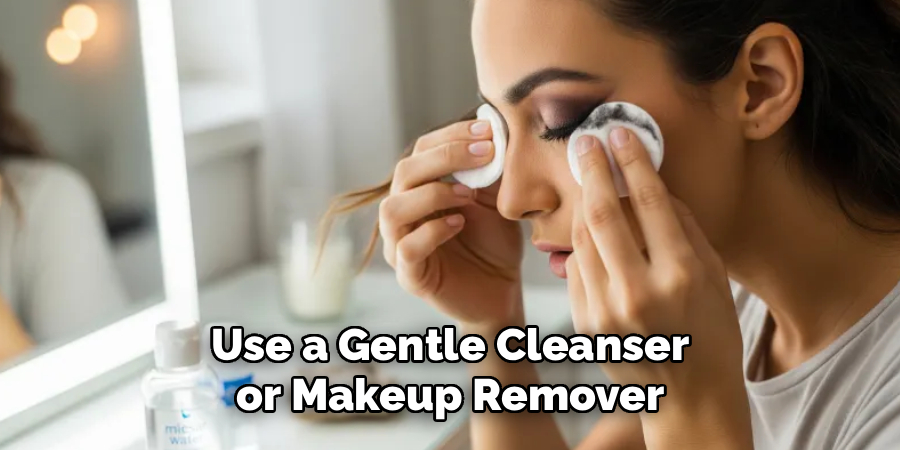Achieving flawless makeup often feels like an art, but cakey foundation can quickly turn a look from polished to patchy. Many makeup lovers face this frustrating issue, which can be caused by a variety of factors, from skin prep to product choice.

Understanding the causes behind cakey makeup is the first step to overcoming it. With the right techniques and knowledge, you can achieve a smooth, natural finish that lasts all day. This guide on how to avoid cakey makeup will walk you through everything you need to know to keep your foundation fresh, light, and beautiful.
Tools and Materials You’ll Need
- Gentle Facial Cleanser
- Alcohol-free Toner or Hydrating Mist
- Lightweight Moisturizer
- Sunscreen (Preferably Non-greasy)
- Face Primer Suited to Your Skin Type
- Foundation (Liquid, Powder, or Cream)
- Beauty Blender or Makeup Sponges
- Foundation and Concealer Brushes
- Setting Powder (Preferably Finely Milled or Translucent)
- Setting Spray
10 Step-By-Step Guidelines on How to Avoid Cakey Makeup
Step 1: Properly Cleanse and Prep Your Skin
Always begin with a clean face. Use a gentle facial cleanser to remove any dirt, oil, or leftover makeup from your skin. Ensuring your face is free from impurities means your products will have a smooth canvas to adhere to.
Once cleansed, apply a toner or hydrating mist to balance the skin’s pH and add a burst of hydration. This step allows your subsequent skincare and makeup layers to absorb more evenly, preventing patchiness later on.

Step 2: Moisturize and Prime According to Your Skin Type
Moisturizing is a non-negotiable step because even oily skin needs hydration. Apply a lightweight moisturizer, focusing on any dry areas. Allow it to absorb fully before moving to the next step.
Primer acts as a barrier between your skin and foundation. Choose a primer designed for your skin’s needs, whether it’s mattifying, pore-filling, or hydrating. This creates an even surface, helping makeup glide on without clinging to textured spots.
Step 3: Use the Right Amount of Foundation
Less is more when it comes to foundation. Start with a small amount and blend it well; you can always add more if needed. Applying too much product leads to a build-up and a cakey finish.
Use a damp beauty blender or brush to apply foundation in thin layers, building up coverage only where necessary. Layering carefully ensures your skin still looks like skin and keeps heaviness at bay.
Step 4: Blend Thoroughly for a Seamless Look
Proper blending is key to avoiding harsh lines and uneven spots. After applying foundation, take extra time to buff and press it into your skin using a sponge or brush. This helps the product meld beautifully.
Don’t forget areas like the jawline, hairline, and around the nose. These commonly missed spots can show visible makeup buildup if not blended properly, contributing to that unwanted cakey appearance.
Step 5: Focus on Targeted Concealing
Instead of layering foundation everywhere for full coverage, spot-conceal problem areas. Use a creamy concealer that matches your skin tone to cover blemishes, redness, or dark circles.
Pat the concealer in gently with your ring finger or a small brush until it disappears into your skin. This keeps the overall look light, natural, and far less likely to cake up throughout the day.

Step 6: Apply Setting Powder Strategically
Rather than dusting powder all over, focus on the areas most prone to oiliness—commonly the T-zone. A finely milled or translucent setting powder will control shine and keep your makeup in place.
Use a fluffy brush and press the powder in lightly, avoiding dry patches. Over-powdering can make your makeup look heavy and accentuate texture, so apply with restraint.
Step 7: Layer Creams and Powders Properly
Creams and powders can work beautifully together if applied in the correct order and manner. Always apply cream products (like blush or bronzer) before setting with powder to maintain a natural, seamless look.
Use light layers and blend thoroughly between each product. Too many products or heavy-handed application can disrupt your flawless base, making it more prone to cakiness.
Step 8: Use a Setting Spray to Melt Products Together
Setting spray is a crucial step that helps remove any excess powdery finish. Mist your face lightly and allow it to dry naturally—this helps makeup settle and mesh with your skin.
For an extra flawless finish, press a clean, damp sponge over your face after spraying. This step ensures everything looks smooth and cohesive, rather than heavy or artificial.
Step 9: Touch Up Sparingly Throughout the Day
If you notice shine or breakdown, touch up only where necessary. Use oil blotting sheets first to absorb excess oil without adding extra product. Lightly reapply powder only if absolutely necessary.
Avoid piling on more foundation or concealer during the day, as this leads to product buildup and an obvious cakey texture. Less is more when maintaining your base.
Step 10: Always Remove Makeup Completely at Night
At the end of the day, always remove your makeup thoroughly. Use a gentle cleanser or makeup remover to ensure every trace of product is gone. This prevents clogged pores and breakouts that can make makeup look uneven the next day.
Follow up with your regular skincare routine so your skin stays healthy, balanced, and ready for another flawless application tomorrow.
Following these steps on how to avoid cakey makeup will give you a flawless and natural-looking finish every time. Remember to take your time, use quality products, and always remove your makeup at the end of the day for beautiful, long-lasting results. Happy blending!

Additional Tips:
- Use a good primer before applying makeup to create a smooth canvas for your foundation.
- Don’t apply too much powder, as it can cling to dry patches and make your makeup look cakey.
- Make sure your makeup brushes and sponges are clean to avoid spreading bacteria on your face.
- If you have oily skin, use oil-absorbing sheets throughout the day instead of adding more powder to minimize cakiness.
- Exfoliate regularly to get rid of dead skin cells that can contribute to cakey makeup.
- Avoid heavy moisturizers or serums before applying makeup, as they can make it difficult for products to blend seamlessly into the skin.
- Use a primer before applying foundation to create a smooth base and help your makeup last longer.
- When applying powder, use a light hand and focus on areas that tend to get oily, such as the T-zone.
- Consider using setting sprays or powders to lock in your makeup and prevent it from looking cakey throughout the day.
- Don’t be afraid to mix different products together to find the perfect combination for your skin type and desired coverage.
Frequently Asked Questions
Q1: Why Does My Foundation Get Cakey by Noon?
A variety of factors can cause mid-day cakiness, including over-applying product or using formulas not suited to your skin type. Sometimes, it’s due to skipping proper skin prep or layering too many products. Make sure to follow the cleansing, moisturizing, and priming steps for the best results. Also, opt for lightweight layers and targeted touch-ups to reduce heaviness over time.
Q2: How Can I Touch Up Makeup Without Making It Look Cakey?
Touch-ups should be thoughtful and minimal. Start by using blotting sheets to remove excess oil before applying any additional product. Use a soft brush to gently reapply powder only where necessary, rather than all over. Avoid adding more liquid or cream foundation as this often results in a patchy, heavy look.
Q3: What Should I Do If My Skin Is Dry and Makeup Looks Flaky?
When your skin is dry, makeup can settle into fine lines and cling to patches, causing cakiness. Focus on hydrating your skin before makeup application and use a dewy or moisturizing foundation. Consider mixing a drop of facial oil into your foundation for extra suppleness. Remember to exfoliate gently once or twice a week to remove dead skin cells.

Q4: Is Setting Powder Necessary to Prevent Cakey Makeup?
Setting powder can be beneficial but should be used wisely and only where necessary, such as in your T-zone. Using too much or applying it all over the face can cause the makeup to appear heavy. Select a finely milled, translucent powder and press it in gently. Remember, it’s perfectly fine to skip powder on dry areas to maintain a fresh and natural appearance.
Conclusion
Cakey makeup is a common challenge, but it’s easy to overcome with the right tools, products, and techniques. By focusing on proper skin prep, choosing lightweight layers, and blending thoroughly, anyone can achieve a flawless, natural look.
Remember to personalize these steps for your skin’s unique needs and embrace touch-ups with care. With a little practice and attention to detail, you’ll master smooth, cake-free makeup—and feel confident every time you step out. Thanks for reading this guide on how to avoid cakey makeup.
About the Author
Jane Hubbard is a passionate beauty expert with a wealth of experience in makeup, hair, and overall beauty techniques. After years of working as a hairdresser specialist, she followed her entrepreneurial spirit and started her own consultancy business.
Jane has always been driven by her desire to help others feel confident in their own skin, and she does this by sharing her knowledge, experiences, and practical beauty tips. Through her consultancy, she empowers individuals to embrace their unique beauty, offering tailored guidance that boosts both self-esteem and personal style.
Professional Focus
- Specializes in makeup, hairstyling, and beauty consulting.
- Provides personalized beauty advice, tips, and techniques to help individuals feel confident in their appearance.
- Dedicated to staying up-to-date with the latest industry trends and developments.
- Passionate about creating a comfortable and empowering experience for every client.
Education History
- University of Craft and Design – Bachelor of Fine Arts (BFA) in Woodworking and Furniture Design
- Woodworking Apprenticeships – Extensive hands-on training with skilled craftsmen to refine carpentry and furniture making techniques
- Online Courses & Masterclasses – Continued education in advanced woodworking techniques, design principles, and specialized tools
Expertise:
- Makeup artistry, hairstyling, and beauty consulting.
- Personalized beauty techniques to enhance confidence and self-expression.
- Educating clients on how to maintain their beauty routines at home.
